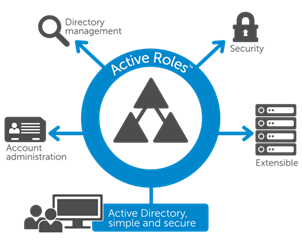Active Directory holds such a prominent position in the enterprise, that inadequate management and security of this universally accepted directory can be a major barrier to IAM success. For all its goodness, AD is woefully lacking in native management tools, privileged account management and natural integration with the rest of the heterogeneous enterprise. Consequently many enterprise IAM project fail to get off the ground simply because IAM for AD is so difficult.
Our One Identity solutions, has a legacy of AD expertise and thousands of customers that have “gotten it right” when it comes to AD, which frees them up to pursue larger, enterprise-level IAM initiatives. In our eBook called Future-proofing Your Tactical IAM Projects this “get AD right” aspect of a successful IAM project is discussed along with single sign-on, password management and multifactor authentication.

There are three major themes that can help ensure a successful AD security and management project – and thus start you on the path to a successful enterprise IAM project:
- Don’t go native — Tools exist that automate the most difficult AD management tasks, provide workflows to ensure accuracy of actions, and provide nearly-instantaneous results that are correct every time. Look for a tool that will enable you to do everything you need for AD (and everything you think you may someday need). If AD is a stumbling block of an enterprise IAM project, taking this “get AD right” approach can entirely remove the need to custom-build AD logic and IAM functionality in an IAM framework.
- Secure AD — Natively, AD lacks the ability to granularly define what administrators can do with their AD Admin access, which causes compliance problems and security risk. Look for active directory tools that allow you to delegate to administrators just as much of the AD Admin credential as they need to do their job.
- Extend AD — An AD bridge is one extremely valuable solution to the password management issue. But joining Unix, Linux and Mac systems to the trusted realm of AD means that any existing management of AD automatically extends to those systems as well. So if a tool is in place that includes workflows to set up, modify and retire AD accounts, that same tool will have a similar impact on Unix, Linux and Mac — eliminating the need to individually manage directories, identities and authentication/authorization on those systems.
Get AD Right and Start to Get IAM Right
And for a detailed discussion of the most common obstacles to efficient and secure management of AD and solutions that overcome those challenges, watch this on-demand webcast: The 12 essential tasks for managing Active Directory Domain Services




